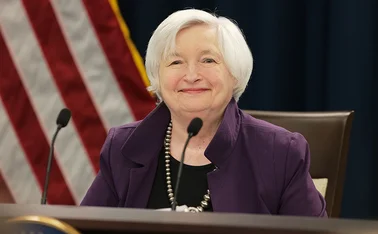
US credit card debt passes $1 trillion for the first time
NY Fed says credit is stabilising at pre-pandemic levels despite historic figure

Credit card debt in the US surpassed $1 trillion for the first time in history, the Federal Reserve Bank of New York reported on August 8. Total household debt increased by $16 billion in the quarter, totalling around $17 trillion.
For seven quarters, credit card balances in the US have grown year on year. “The second quarter of 2023 saw a brisk 16.2% increase from the previous year, continuing this strong trend,” said the New York Fed.
Delinquency rates in the quarter remained both low and
Only users who have a paid subscription or are part of a corporate subscription are able to print or copy content.
To access these options, along with all other subscription benefits, please contact info@centralbanking.com or view our subscription options here: subscriptions.centralbanking.com/subscribe
You are currently unable to print this content. Please contact info@centralbanking.com to find out more.
You are currently unable to copy this content. Please contact info@centralbanking.com to find out more.
Copyright Infopro Digital Limited. All rights reserved.
As outlined in our terms and conditions, https://www.infopro-digital.com/terms-and-conditions/subscriptions/ (point 2.4), printing is limited to a single copy.
If you would like to purchase additional rights please email info@centralbanking.com test test test
Copyright Infopro Digital Limited. All rights reserved.
You may share this content using our article tools. As outlined in our terms and conditions, https://www.infopro-digital.com/terms-and-conditions/subscriptions/ (clause 2.4), an Authorised User may only make one copy of the materials for their own personal use. You must also comply with the restrictions in clause 2.5.
If you would like to purchase additional rights please email info@centralbanking.com test test test







